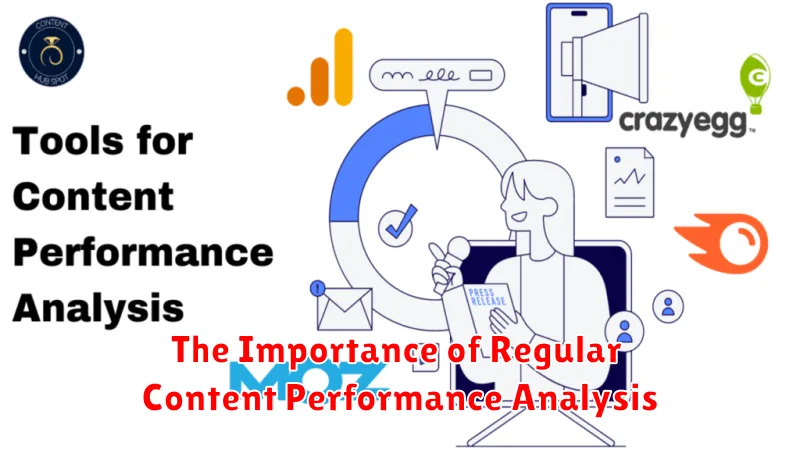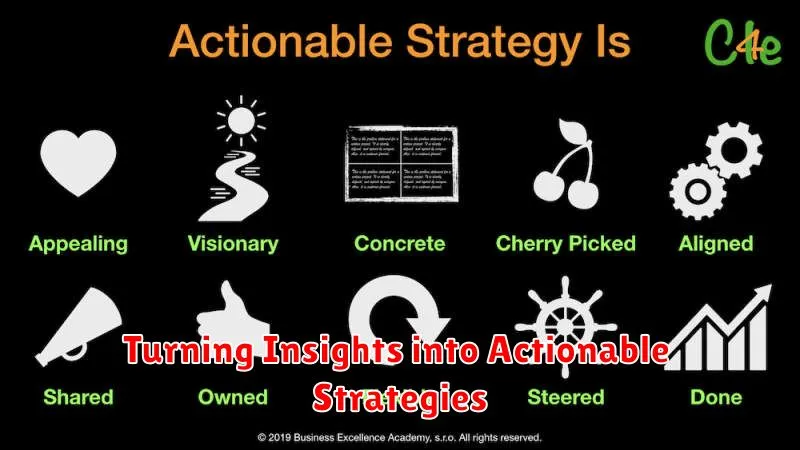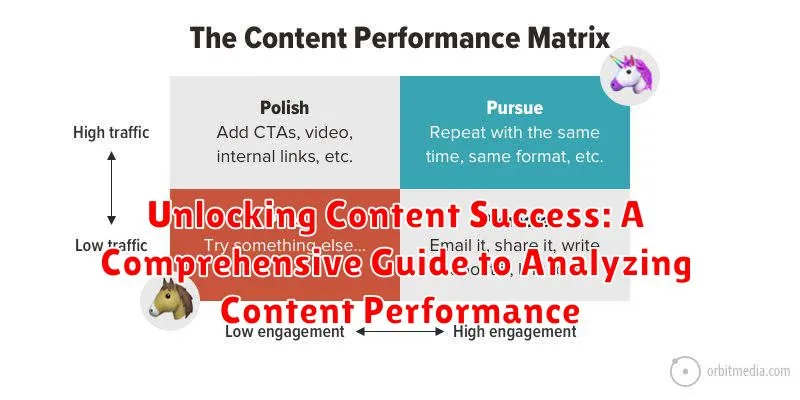In today’s digital landscape, creating high-quality content is only half the battle. Understanding how your content performs is crucial for achieving content success. This comprehensive guide delves into the essential aspects of content performance analysis, providing you with the knowledge and tools to effectively measure, interpret, and optimize your content strategy. From defining key performance indicators (KPIs) to leveraging analytics platforms and understanding audience behavior, this resource will empower you to unlock the full potential of your content and drive meaningful results.
Unlocking content success requires a data-driven approach. This guide will equip you with a framework for analyzing content performance across various channels, allowing you to identify what resonates with your audience, what falls flat, and how to refine your approach for continuous improvement. We will explore the metrics that matter most, including engagement, reach, conversions, and ROI, providing practical strategies for maximizing your content performance and achieving your business objectives. Whether you’re a seasoned content creator or just starting out, this guide is your key to content success.
Defining Your Content Goals and KPIs
Before diving into content analysis, it’s crucial to establish clear goals and define the Key Performance Indicators (KPIs) that will measure your success. This foundational step ensures your analysis is focused and actionable.
Start by identifying what you want to achieve with your content. Are you aiming to increase brand awareness, drive website traffic, generate leads, or boost sales? Clearly defined goals provide direction for your content strategy and analysis efforts.
Once your goals are established, select the KPIs that will effectively track your progress. These metrics should be specific, measurable, achievable, relevant, and time-bound (SMART). For example, if your goal is to increase brand awareness, relevant KPIs might include social media reach, mentions, and share counts. If your goal is lead generation, KPIs could include form submissions, email sign-ups, and content downloads.
Tracking Key Metrics: Website Traffic, Engagement, and Conversions
Tracking key metrics is crucial for understanding content effectiveness. Website traffic provides insight into how many people are visiting your content. Monitor metrics like unique visitors, page views, and traffic sources to gauge reach and identify potential areas for improvement.
Engagement reveals how users interact with your content. Key metrics include bounce rate, time on page, and pages per session. A low bounce rate and high time on page suggest compelling content that resonates with your audience. Tracking pages per session can indicate how effectively your content guides users through your website.
Finally, conversions measure the desired actions users take after engaging with your content. This could include signing up for a newsletter, making a purchase, or downloading a resource. Tracking conversion rates helps determine the ROI of your content and identify which pieces are most effective in driving desired outcomes.
Understanding Your Audience and Their Behavior
Creating effective content hinges on a deep understanding of your target audience. Who are they? What are their interests, needs, and pain points? Where do they spend their time online? Answering these questions is crucial for tailoring your content to resonate with them.
Analyzing audience behavior provides valuable insights into how they interact with your content. Metrics like bounce rate, time on page, and pages per session reveal whether your content is engaging and meeting their expectations. Pay attention to demographic data, interests, and online behavior patterns. These details inform content strategy, topic selection, and even the tone and style of your writing.
By understanding your audience, you can create content that attracts, engages, and ultimately converts. This knowledge empowers you to deliver the right message, at the right time, in the right place, maximizing your content’s impact.
Using Analytics Platforms: Google Analytics, Social Media Insights, and More
Leveraging analytics platforms is crucial for gaining data-driven insights into content performance. Google Analytics provides a wealth of information about website traffic, user behavior, and conversions. Track metrics such as page views, bounce rate, time on page, and referral sources to understand how users interact with your content.
Social media insights, available on each platform, offer valuable data about audience engagement, reach, and demographics. Analyze metrics like likes, shares, comments, and follower growth to gauge content effectiveness on social media.
Beyond these popular platforms, consider exploring other tools specialized for content analysis. These might include platforms focused on SEO performance, content readability, or competitor analysis. Choosing the right tools depends on your specific content goals and the channels you utilize.
Analyzing Content Performance Across Different Channels
Cross-channel content analysis is crucial for understanding the complete picture of your content’s impact. Each channel caters to a different audience segment and offers unique engagement opportunities. Therefore, analyzing performance in isolation on each platform provides limited insight.
Consider a scenario where you share blog posts, videos, and infographics across your website, social media platforms (like Instagram, Facebook, and X (formerly Twitter)), and email newsletters. Analyzing performance across these channels involves comparing metrics specific to each platform.
For example, website metrics might include page views, bounce rate, and time on page. Social media performance is measured by likes, shares, comments, and reach. Email newsletters are assessed through open rates, click-through rates, and conversions.
By comparing performance across channels, you can identify which content formats resonate with specific audiences and tailor your strategy accordingly. This approach ensures consistent brand messaging while optimizing content for each channel’s strengths.
Identifying Top-Performing Content and Replicating Success
Pinpointing your most successful content is crucial for scaling your content strategy. This involves analyzing various metrics to determine which pieces resonated most with your audience. Look for patterns and commonalities among your top performers.
Key metrics to consider include page views, time spent on page, social shares, and conversion rates. For example, if several high-performing blog posts all cover a similar topic or utilize a particular format, this indicates audience preference that you can leverage.
Replicating success doesn’t mean simply copying content. Instead, analyze why certain pieces performed well. Was it the topic, the style, the format, or the distribution channel? Once you understand the contributing factors, you can create new content that incorporates similar elements while still offering fresh perspectives and value.
Consider creating a content inventory to track performance and identify trends. This allows for easier comparison and analysis across various content pieces.
A/B Testing and Optimizing Content for Better Results
A/B testing is a crucial step in optimizing content performance. It involves creating two versions of a piece of content (A and B) with a single element varied, such as a headline, call to action, or image. By showing these versions to different segments of your audience, you can determine which performs better based on your chosen metrics.
Key elements to consider for A/B testing include headlines, subheadings, body copy, images, calls to action, and even the layout of your content. Start by identifying areas for potential improvement based on your initial content performance analysis. Then, formulate a hypothesis about which variation will perform better and test it.
Once you have sufficient data, analyze the results to determine the winning variation. Statistical significance is important to ensure the observed differences are not due to random chance. Implement the winning variation and continue to iterate through this process to continually optimize your content.
The Importance of Regular Content Performance Analysis

Regular content performance analysis is crucial for sustained online success. It provides a dynamic understanding of how your content resonates with your audience and contributes to your business objectives. Without consistent analysis, you’re essentially navigating in the dark, unable to optimize your efforts effectively.
Consistent monitoring allows you to identify trends, both positive and negative, in your content’s performance. This early identification enables proactive adjustments to your content strategy, preventing wasted resources on ineffective tactics.
Furthermore, regular analysis helps you understand the evolving needs and preferences of your audience. By tracking engagement patterns, you can tailor future content to better meet these needs and maintain a strong connection.
Ultimately, regular content performance analysis empowers you to make data-driven decisions, maximizing your return on investment and achieving your content marketing goals.
Turning Insights into Actionable Strategies

Data analysis without action is meaningless. The true value of content performance analysis lies in its ability to inform strategic decisions. This means translating the observed trends and patterns into concrete steps for improvement.
Start by prioritizing the insights. Focus on the areas with the greatest potential impact. For example, if analysis reveals a particular content format resonates strongly with your audience, consider creating more content in that format. Conversely, if certain topics consistently underperform, evaluate whether they align with your overall content strategy.
Experimentation is key. Don’t be afraid to try new approaches based on your findings. Perhaps adjusting the publishing schedule, promoting content differently, or refining your target keywords could yield significant improvements.
Finally, remember that content performance is an ongoing process. Regularly review and refine your strategies based on the latest data to ensure your content continues to achieve its intended goals.

